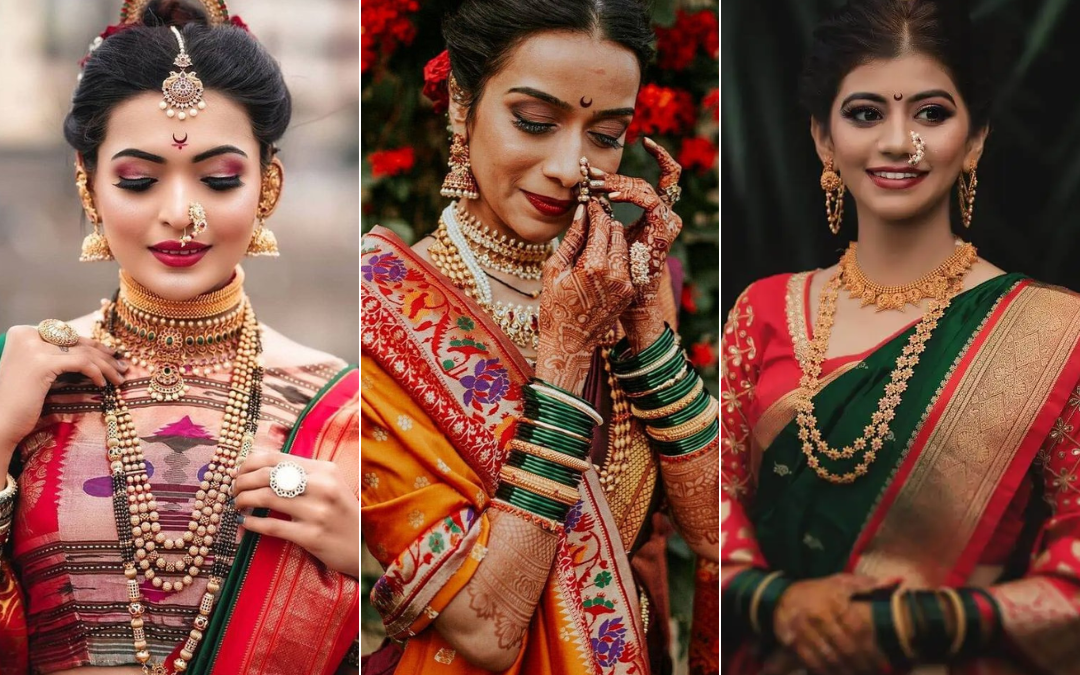In Indian culture, the gold mangalsutra is the most cherished traditional jewellery for women. It symbolises their love and commitment to their partners. A gold mangalsutra is given to a woman by her groom during the marriage, and she wears it as a mark of their bond for as long as her partner is alive. It serves as a testament to the everlasting love shared between the couple.
While the significance and purpose of the mangalsutra remain the same across different Indian traditions, the designs vary based on cultural preferences. Let us explore the diverse styles of gold mangalsutras worn in various country regions.
- Gujarati and Marwari Mangalsutra: Gujarati and Marwari women embrace trendy jewellery, and their mangalsutra designs reflect this preference. They often wear a gold chain with black beads and a stone-studded pendant as their mangalsutra.
- Koli and Fisherman Mangalsutra: Koli and Fisherman communities, known for their deep connection to the sea, wear two mangalsutras. These mangalsutras symbolize their devotion to both their husbands and the sea deity.
- Goan and Konkani Kasithaali: In Goa and Konkan, the mangalsutra style is known as Kasithaali. It features a gold chain adorned with corals, gold beads, and an idol of Goddess Lakshmi. Some women also wear a mangalsutra with a disc-shaped pendant depicting the design of Devi Lakshmi, representing prosperity and wealth.
- Bihari Taagpaag: Bihari women wear Taagpaag as a mangalsutra, which signifies their married status. It is customary for every married woman to wear it until her husband is alive.
- Maharashtrian Mangalsutra: Maharashtrian women wear exquisite gold mangalsutras with distinctive features. The mangalsutra typically consists of gold and black beads and comes in two main types: “The Nirgun” and “The Shagun.” The Nirgun mangalsutra features simple plain black beads, while the Shagun mangalsutra has golden beads interspersed every nine black beads. The chain is adorned with a pendant consisting of two hollow disc-shaped cups, with the hollow side touching the woman’s body and the raised side visible to others. The designs of Maharashtrian gold mangalsutras are known for their unique and captivating beauty, and simpler designs are believed to have a greater impact.
- Christian Mangalsutra: Christians in Kerala and Karnataka wear a mangalsutra with a pendant shaped like a banana leaf embellished with a cross symbol. Kannadiga brides have a specially designed mangalsutra called Vadungila, which features a V-shaped ring.
- Kashmiri Pandit Dehjoor: Kashmiri Pandits have their distinctive mangalsutra known as “Dehjoor.” It consists of long earrings that reach the bride’s chest. These earrings come in various designs, with a long chain of gold or colored thread. The Kashmiri bride wears the Dehjoor during her wedding ceremony.
These are just a few examples of the diverse mangalsutra styles worn in different regions of India. Each style carries its own significance and boasts unique designs that celebrate the cultural heritage and traditions of the respective communities. Whether it’s the trendy appeal of Gujarati and Marwari designs or the intricate craftsmanship of Maharashtrian mangalsutras, each variation represents the beauty and individuality of Indian jewellery traditions.
Related posts
Recent Posts
Advertisement



